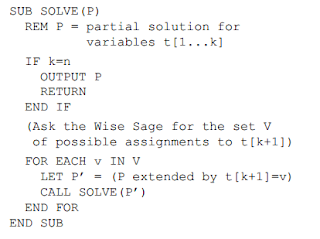Article:
An algorithm for constraint-based structural template matching: application to 3D templates with statistical analysis
Autors:
Jonathan A. Barker∗,† and Janet M. Thornton
This paper mentions about the diferents algorithms and methods based in structural templates, that we can be use in 3D templates. Mention that in the biology exist diferent structures templates and function, the structural templates consist of atoms in a specific geometric conformation provide a powerful tool for studying the relation ship between protein structure and funcition.
A small structural template, for an active site typically consists of around ten functional atoms in a specific geometric shape. Usually there are no restrictions on the type of atom and, sometimes, sequential relations, exist methods for template searching constrain template syntax and semantics by their design. The real functional properties of a protein without doubt should be represented more easily by a good structure in 3D instead of just a sequence of 1D.
Several tools have been developed expressly for the purpose of seeking well-defined structural templates. For best results here is introduces Jess, a fast and flexible algorithm for searching protein structures for small groups of atoms under arbitrary constraints on geometry and chemistry.
An alghoritm is the suite with SPASM and RIGOR allows a greater general coincidence of centroid Cα and positions. On the other hand JESS requires substantial pre-calculation and storage and also imposes more stringent limitations in the semantics of the template.
An other term, spoke about the best algorithm implement for structural templates it is the design of JESS (JESS is not an acronym, but that is so called in honor of his TESS predecessor, the T replaced by the first initial of the author of Jess) that they were guided by the following requirements:
1. Generality: JESS must be capable of processing a template that consists of arbitrary restrictions on physical, sequential and geometric properties.
2. Compatibility: A large number of JESS and templates have been derived from SPASM and refined within our group. It would be desirable for JESS to be able to process these templates in order to extend their definitions to a later date.
3. Standardization: In general, the templates have a wide variety specificity and selectivity.
4. Modularity: The internal design of JESS must be modular enough to allow the modification of the template syntax without significant re-encoding.
Mentions that the normalization is essentially a post-processing. In the case of the templates of JESS, the candidate sites are scored using RMSD after a optimal rigid overlap with the atoms in the template.
Algorithm
The most important algorithm mention is JESS, that describe the process of templates, geometric constraints are constructed by measuring pairwise distances between the atoms and allowing distance mismatches up to a maximum supplied as a parameter, it is consist:
- The atoms of T are thought of as variables t1,...,tn , the ordering being unimportant but held fixed throughout the computation.
- The task facing Jess is to find all possible assignments{t1←m1,...,tn←mn} of atoms in M to the template variables which simultaneously satisfy all the constraints in C.
- Problems such as this fall within the domain of constraint logic programming
Define a partial solution as a set of assignments {t1←m1,...,tk←mk}with k≤n for which all constraints in C involving t1,...,tk alone are satisfied. . The basic method of solution is inductive; we assume a partial solution and attempt to extend it by fixing the assignment of one more variable.
Then we can construct all complete solutions to the problem using the next pseudocode:
The core of
Jess is a combination of a trace constraint solver and a comprehensive index of
the query molecule. The constraint solver works in cooperation with a compiled
template separately to find solutions in the system of constraints in an
efficient manner.
Methods for Statical analysis
For work in a sigle template the statistical analysis is at least, in this case the results are directly comparable, but if we want to compare the results obtained with several templates, we have to take into account that have different specifications and the normalization of the results of different templates.
As usual we constructed a non-redundant structure reference population R, and analyzes the distribution of the results obtained when R is polled with each of the templates.
Reference population
- SCOP and CATH, for example, provide lists of representatives at various levels of structural similarity. However structural classification takes place mostly at the domain level.
- For each of the structures classified in CATH we recorded domain composition at the H-level (homology)including multiplicity.
- Thus, each structure is assigned a label in the form of a multi-set of domain codes.
Fitting model distributions
In the same structure was used 186 enzyme active site templates, we probed the reference population described above. The results were collected on a per-template basis. Was used the Marquardt–Levenberg (ML) algorithm to fit normal distributions to cumulative frequency data and the Kolmogorov–Smirnoff test to assess the results.
----------------------------------------------------------------------------------------------------------------------------------
Personal Conclusion
The 3D templates are very important within the bioinformatics, because it helps in the prediction or calculation of the 3D structures of different proteins, in medicine for the design of drugs and biotechnology (in the design of new enzymes).
Available at: http://bioinformatics.oxfordjournals.org/content/19/13/1644.full.pdf [Accessed in 28 May 2013]


Autors -> Authors. La referencia bibliográfica falta poner en el formato adecuado. No deberías decir "we" en un resumen; parece que uno está simplemente copiando texto cuando pasa eso. 3 pts extra para la última tarea.
ResponderEliminar